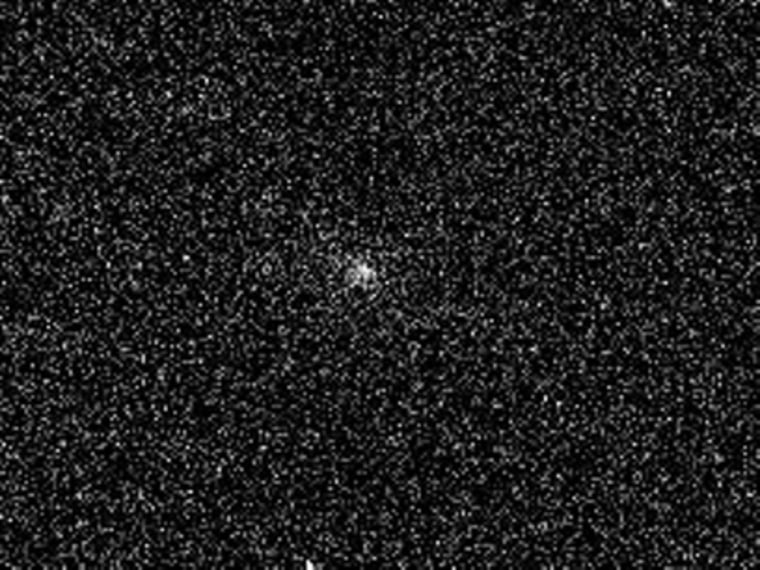
A probe in orbit around Mars spotted Comet ISON — a possible "comet of the century" — as it flew past the Red Planet on its way to give the sun a close shave come November.
On Sept. 29, NASA's Mars Reconnaissance Orbiter pointed its High Resolution Imaging Science Experiment (HiRISE) camera at Comet ISON — a speeding ball of ice and dirt flying through the solar system — to make observations and measure its brightness.
Although the ISON may look like a fuzzy blob in the new photos produced by HiRISE, scientists can still glean important information from the images sent to Earth from Mars. [Photos of Comet ISON: A Potentially Great Comet]
"Based on preliminary analysis of the data, the comet appears to be at the low end of the range of brightness predictions for the observation," officials in charge of the HiRISE instrument wrote in a release. "As a result, the image isn't visually pleasing but low coma activity is best for constraining the size of the nucleus."
At the moment, ISON is making its closest approach to the Red Planet. The comet is now flying about 7 million miles (1.1 million kilometers) off the surface of Mars and HiRISE scientists are planning on observing ISON three more times as it makes its close pass.
Comet ISON is a bit dimmer than many observers hoped it would be at this point in its shot toward the sun, but hope is not lost for the promising comet. As ISON comes closer to the sun, more of its ice is expected to evaporate, making the comet even brighter.
The comet will make its closest approach of the sun on Nov. 28, flying just 730,000 miles (1.2 million km) off the star's surface.
Many skywatchers hope that Comet ISON will brighten significantly, giving observers on Earth a brilliant show. Skywatchers have mixed reviews of the comet's current activity, however. Some amateur astronomers think that Comet ISON will be absolutely stunning in December while others think it's fizzling out.
Comet ISON's future brightness is particularly difficult to predict because of its origins. Scientists suspect that the comet comes from the Oort Cloud, a mass of icy bodies orbiting the sun trillions of miles from the inner solar system. Occasionally, like ISON, one of these comets is flung on a course toward the sun.
Because Comet ISON has never been this close to the sun before, it's hard to know whether it will brighten or fizzle under the relatively intense heat it is experiencing on its way toward the sun.
These HiRISE observations are part of an extended campaign keeping an eye on the comet. NASA, the European Space Agency, amateur astronomers and other space agencies around the world are pitching in to observe the potentially dazzling comet as it flies though the solar system. ESA's Mars Express spacecraft began its observation campaign on Sept. 21 and was expected to be in a good position to see the comet's close flyby of the Red Planet.
When ISON makes its way around the sun, solar-observing telescopes such as the NASA/ESA Solar and Heliospheric Observatory will keep an eye out for the comet. The Venus Express spacecraft and Proba-2 in Earth's orbit will also try to catch sight of Comet ISON in November and December.
Follow Miriam Kramer @mirikramer and Google+. Follow us @Spacedotcom, Facebook and Google+. Original article on Space.com.
- Potentially Dazzling Comet ISON: 8 Essential Facts
- Comet ISON's Mars 'Buzz' - Orbiter and Rovers on Lookout | Video
- Amazing Comet Photos of 2013 by Stargazers
